The week at a glance
- Spanish Sparrow and Dark-eyed Junco still in Hampshire
- Ross's Gull still in County Down
- Lesser White-fronted Goose and Western Sandpiper still in Norfolk
- Bufflehead still in Cornwall
- Belated news of a Brünnich's Guillemot in Moray
Save for the emergence of a rather gripping image of a northern auk, this week looked, for all intents and purposes, very much like the previous one. Nevertheless, it was still a busy week on Bird News Extra, with plenty of lingering rarities and scarcities remaining in residence up and down the country, allowing year-listers plenty of opportunity to bolster their totals considerably.
In Hampshire, the male Spanish Sparrow continued to frequent gardens around Calshot — a phrase that will no doubt be repeated in many weeks to come. Just to the west, the Dark-eyed Junco continued its stay in the New Forest at Hawkhill Inclosure throughout, although it proved elusive at times.
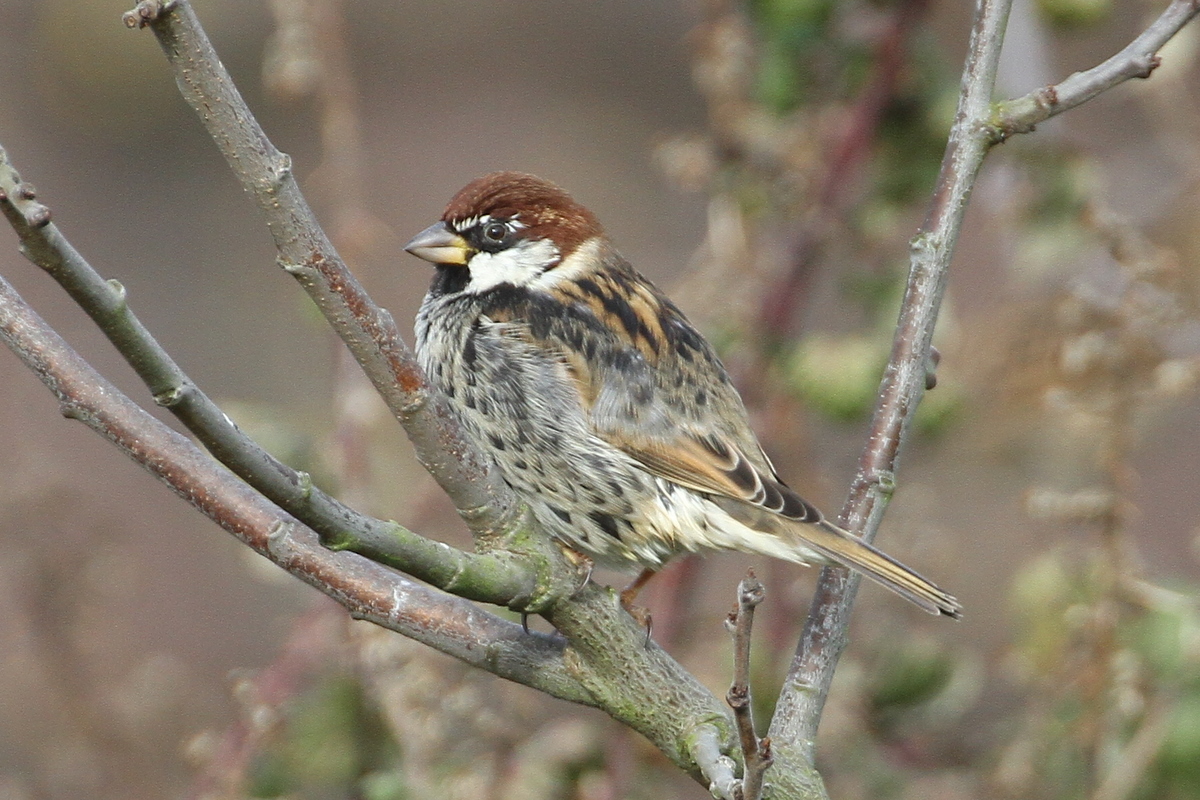
Spanish Sparrow, Calshot, Hampshire (Photo: Adi Sheppard)
Last week's 11th-hour arrival — the adult Ross's Gull at Ardglass (Down) — was still present and performing well at the harbour entrance all week. This is the first twitchable bird anywhere in Britain and Ireland since the sickly Lytham St. Annes (Lancs) individual of spring 2008, and thus rightly proved a star attraction throughout the week.
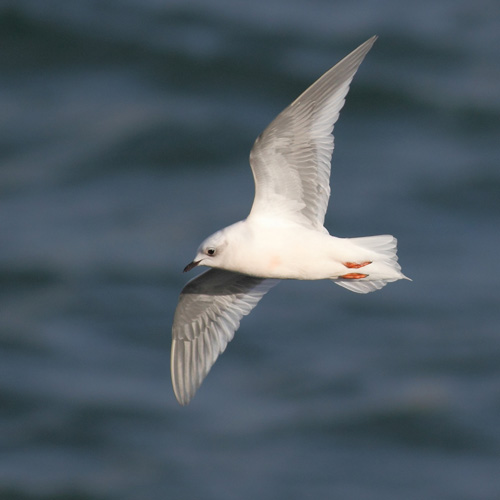
Ross's Gull, Ardglass, Down (Photo: Allen Gillespie)
In other news, the adult Lesser White-fronted Goose was still commuting between Buckenham and Cantley Marshes (Norfolk), while the Western Sandpiper was also still at Cley Marshes all week. The Bufflehead was at Helston Loe Pool (Cornwall) throughout.

Lesser White-fronted Goose, Cantley Marshes RSPB, Norfolk (Photo: Richard Jackson)
Unfortunately, there was sobering news from Highland: negative news on the Greater Yellowlegs at Loch Fleet on 19th was followed by details emerging that the bird had been seen on 13th badly wounded and with an apparent broken leg. It seems likely that the bird suffered a predator attack and has likely since succumbed to its injuries.
The final big story of the week concerned the presence of a Brünnich's Guillemot at Burghead (Moray). Unfortunately, the bird was not actually seen during the week, but was belatedly reported following the Web appearance of a photograph taken in the harbour on 17th November 2011. Another twitchable individual would be sensationally popular with the masses, particularly if on the mainland — the last was on Shetland late on in 2005.
A Red-breasted Goose was found among the Barnacles at Drumburgh Moss (Cumbria) early on 22nd, before later relocating to Cardurnock then Caerlaverock (Dumf & Gall) the following day, where it remained to 25th at least. Could it be the recent North Yorkshire bird relocating? Others were still on the Exe Estuary (Devon), and commuting between Tollesbury Wick and Old Hall Marshes (Essex). A distinctively average showing of seven Black Brants included a bird again at Carricklahan (Mayo) on 20th, with others in Lincolnshire, Norfolk (two), Suffolk, Essex and West Sussex. The only Richardson's Canada Geese reported this week were at Loch Gruinart, Islay (Argyll) on 24th and the usual bird at Torr Reservoir (Somerset).

Red-breasted Goose, Cardurnock, Cumbria (Photo: Sam Northwood)
A white-morph Snow Goose was found with Greylags at Loch Evelix (Highland) on 21st, while the gaggle of white morphs at Leighton Moss appeared to undergo fission as three became five by 22nd. The Solway Ross's Goose was unearthed at Burgh Marsh (Cumbria) on 23rd, while at least one adult (with a dark history) was still touring north Norfolk.
In the Outer Hebrides, the female/juvenile Blue-winged Teal was again at Loch Stiapavat, Lewis on 19th, and the young drake was still on St. Mary's (Scilly) throughout. Just seven Green-winged Teal included a new drake at Sandbach Flashes (Cheshire) on 19th–21st, with others again at Tacumshin (Wexford) and Alton Water (Suffolk) on 22nd. Further drakes were still at Eyebrook Reservoir (Leics), Leighton Moss (Lancs), and on Holy Island and at East Chevington (both Northumberland). Six American Wigeon were all lingering birds: two drakes were still at Loch Bee, S. Uist (Outer Hebrides) on 19th with singletons still at Dawlish Warren (Devon), Angler's Country Park (W Yorks) and Kirk Loch (Dumf & Gall), and the female was again at Bodenham Lake (Herefordshire) on 21st.
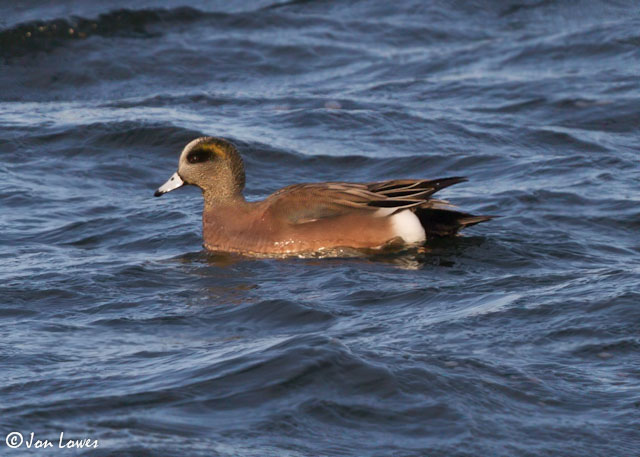
American Wigeon, Anglers CP, West Yorkshire (Photo: Jon Lowes)
The drake Lesser Scaup was still at Lough Gill (Kerry) on 23rd, with females still in residence at Marden Quarry (Northumberland) and Slimbridge (Glos). The drake at Dozmary Pool (Cornwall) was finally confirmed on 25th as a first-winter, and thus not the bird from previous years. Ferruginous Ducks consisted of a new drake at Whitlingham Country Park (Norfolk) on 19th–22nd, the bird still at Blashford Lakes (Hants) on 25th and the female again at Thamesmead (London) from 22nd. Just a single new Ring-necked Duck was found this week: a drake at Trabboch (Ayrshire) on 24th. Two drakes were still at Chard Junction (Dorset) throughout, and others were still in residence at College Reservoir and Par Beach Pool (both Cornwall), Cowpen Bewley (Cleveland) and Carrowmore Lake (Mayo). In Norfolk, the female was again at Ranworth Broad on 20th–21st.
A healthy week for Surf Scoters included three off Lahinch (Clare) on 23rd; another Irish bird concerned the young drake again off Garretstown (Cork) on 22nd. Two Welsh birds consisted of a new female showing well off Morfa Nefyn (Gwynedd) from 24th and a drake still off Llanddulas (Conwy) on 19th, while the ever-present female off Dawlish Warren (Devon) constituted the only English record. A couple of regular White-billed Divers in Shetland were again in South Nesting Bay on 23rd and Bluemull Sound on 24th.

Surf Scoter, Morfa Nefyn, Gwynedd (Photo: anon)
The strong possibility of free-flying escapes means that midwinter records of Night Heron must always be treated with some caution. This proved to be valid in the case of an adult at Atherstone (Warks) on 21st — a metal ring established that this bird had gone AWOL from a zoo collection in Arnhem in the Netherlands!

Night Heron, Atherstone, Warwickshire (Photo: Dave Hutton)
The Cattle Egret was again at Hillsborough (Down) on 22nd–24th, and long-staying birds were still at Warblington (Hants) and Tophill Low (E Yorks). Two were also still on Jersey during the week. Looking for Great White Egrets seems to have gone out of fashion, with just fifteen this week including twos still at Dungeness (Kent) and Llanrhidian Marsh, Gower (Glamorgan).
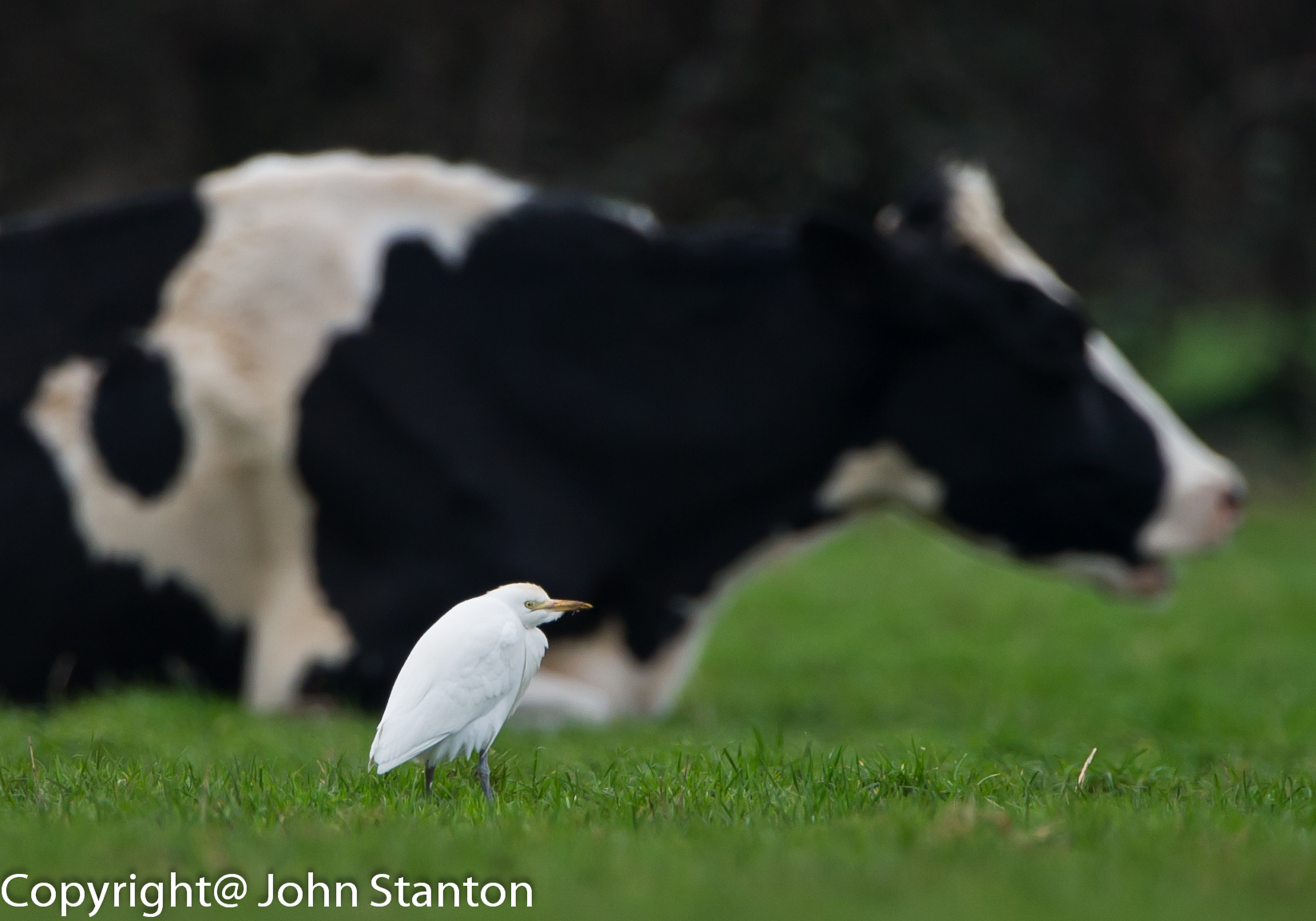
Cattle Egret, Warblington, Hampshire (Photo: John Stanton)
A couple of White Stork records concerned the reappearance of the escapee at Sookholme (Notts) on 19th, while one flew south over East Chevington and Cresswell Pond (Northumbs) on 22nd. It was then over Queen Elizabeth II Country Park the following morning and Ravenscar (N Yorks) that afternoon.
Following last week's spontaneous arrival, there were still plenty of Glossy Ibises about. Five penetrated as far north as Eigg (Highland) on 20th, while other new birds were at Tamar Lakes (Devon) on 20th and Broad Lough (Wicklow) on 22nd. Two flew over Dowrog Common (Pembrokeshire) on 22nd and 24th, while the bird at Newport Wetlands (Gwent) was joined by a second from 19th. Three were still at Marloes (Pembrokeshire), with two still at Stodmarsh (Kent). Others were also still at Termoncarragh Lough (Mayo), Leighton Moss (Lancs), Sandbach Flashes (Cheshire), Fingringhoe Wick (Essex), Chapel Amble (Cornwall) and Exminster Marshes and Thurlestone (both Devon), while the Stanpit Marsh (Dorset) bird reappeared on 24th after an absence of six weeks.

Glossy Ibis, Chapel Amble, Cornwall (Photo: Ray)
Another tantalising Gyr Falcon record from Orkney concerned one flying by Stromness on 23rd. At least fifteen Rough-legged Buzzards were headlined by one still in the Kilcoole (Wicklow) area throughout, with at least three in the Holkham/Wells-next-the-Sea (Norfolk) area all week, and two at Sleddale (Cleveland) on 19th.
A Common Crane spent much of the week touring Dorset airspace, being seen over Wareham on 19th, Bovington Camp on 20th and 21st, and Arne on 22nd. Over in western Ireland, three adults at Ardfert (Kerry) on 20th–24th was a good record.

Common Crane, Ardfert, Kerry (Photo: Ed Carty)
The appearance of a Temminck's Stint at Rushy Common (Oxon) from 19th immediately suggested that the wandering bird had finally left the Ouse Washes (Cambs). However, the continued presence of the latter bird on 21st–23rd confirms that, quite remarkably, there are at least two birds touring the Midlands at present.
It was otherwise quiet on the wader front; two Long-billed Dowitchers were still at The Cull (Wexford) on 19th, Wigtown (Dumf & Gall) to 21st, and Kidwelly (Carmarthenshire) on 22nd–23rd. The three wintering Spotted Sandpipers were still in residence at Lyme Regis (Dorset), on the Plym Estuary (Devon) and at Chew Valley Lake (Somerset), with the Lesser Yellowlegs also still in the latter county at Burnham-on-Sea.
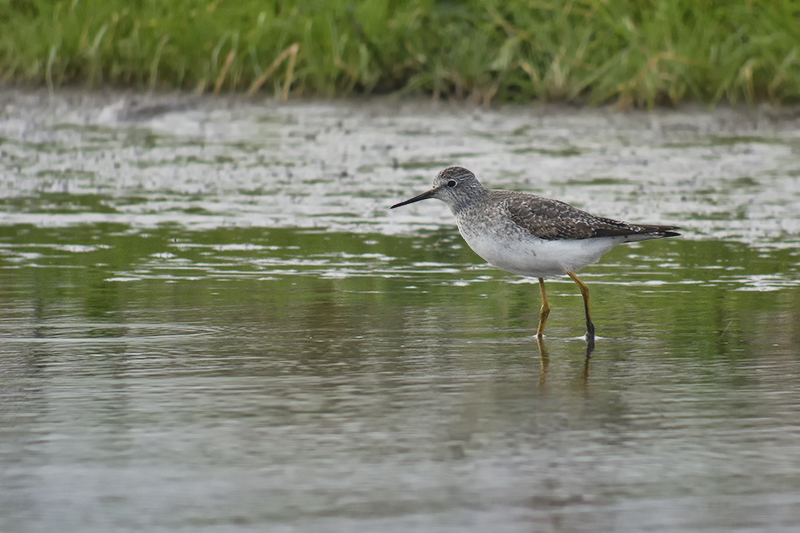
Lesser Yellowlegs, Burnham-on-Sea, Somerset & Bristol (Photo: Gary Loader)
A couple of Grey Phalaropes included a lingering bird at Farmoor Reservoir (Oxon) to 24th, and a Little Auk was a superb find at College Lake (Bucks) on 22nd. To the delight of local listers, the bird was still present early the following morning, but didn't last long — it was soon (rather inevitably) despatched by local Carrion Crows.
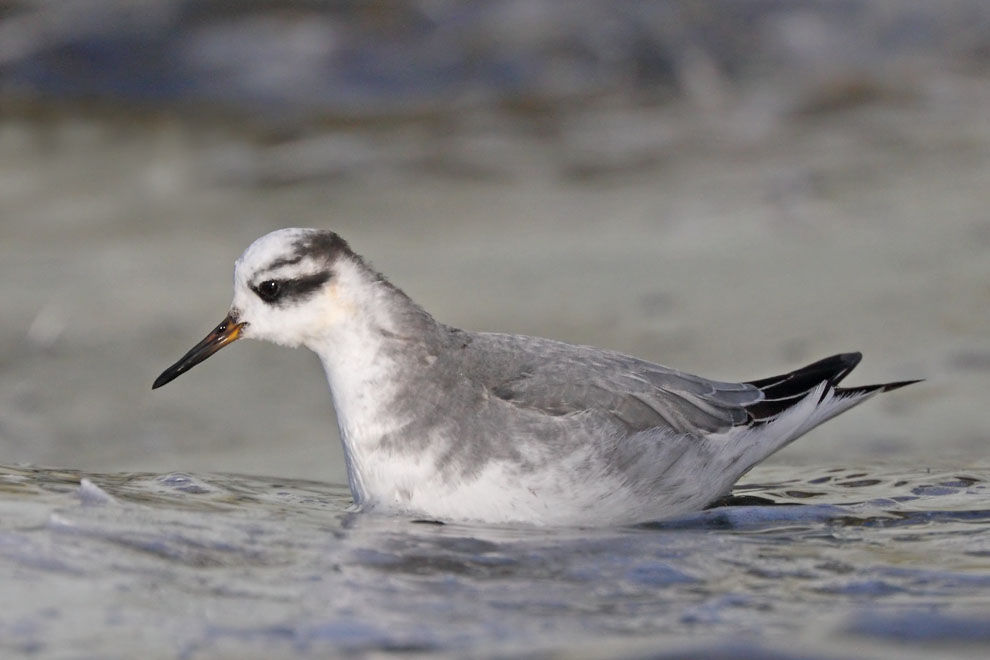
Grey Phalarope, Farmoor Reservoir, Oxfordshire (Photo: Stephen Burch)
There were still as many as 600 Iceland Gulls around this week, with more birds filtering south towards the British mainland. The biggest counts came, once more, from the Northern and Western Isles, with at least 74 in Stornoway Harbour, Lewis (Outer Hebrides), 50 at Sand Geo (Orkney) and 49 at Symbister, Whalsay (Shetland). Ireland recorded smaller numbers, with the highest count of 15 coming from Ardglass (Down).
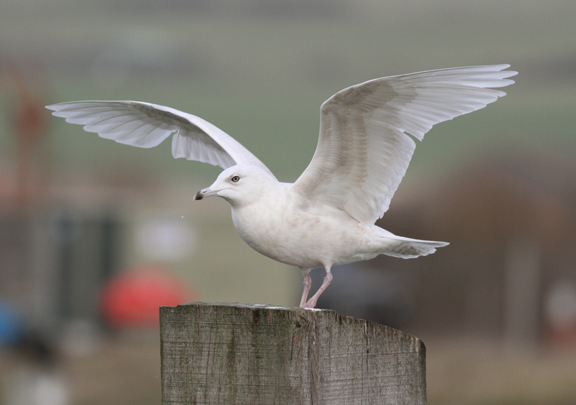
Iceland Gull, Newhaven, East Sussex (Photo: Jacob J Everitt)
Among them were over 35 Kumlien's Gulls; peak counts included up to five at Ardglass (Down), and fours at Sand Geo (Orkney) and Lerwick (Shetland).

Kumlien's Gull, Ardglass, Down (Photo: Derek Charles)
Glaucous Gulls occurred in much more 'normal' numbers: around 140 included up to 14 in the Marwick (Orkney) area and at least nine around The Mullet (Mayo).
In addition to the regular adult still at Larne (Antrim) to 22nd, two new Bonaparte's Gulls were found: first-winters were at Loch Branahuie, Lewis (Outer Hebrides) on 20th and on the Douglas Estuary (Cork) the following day. However, a report of a first-winter Franklin's Gull at Earl's Barton Gravel Pits (Northants) on 23rd remained unsubstantiated. Twenty-one Ring-billed Gulls were once again split relatively evenly between Britain and Ireland, and included new first-winters on Tiree (Argyll) and at Black Rock Strand (Kerry). The Forster's Tern was again off Doorus Pier (Galway) on 20th.
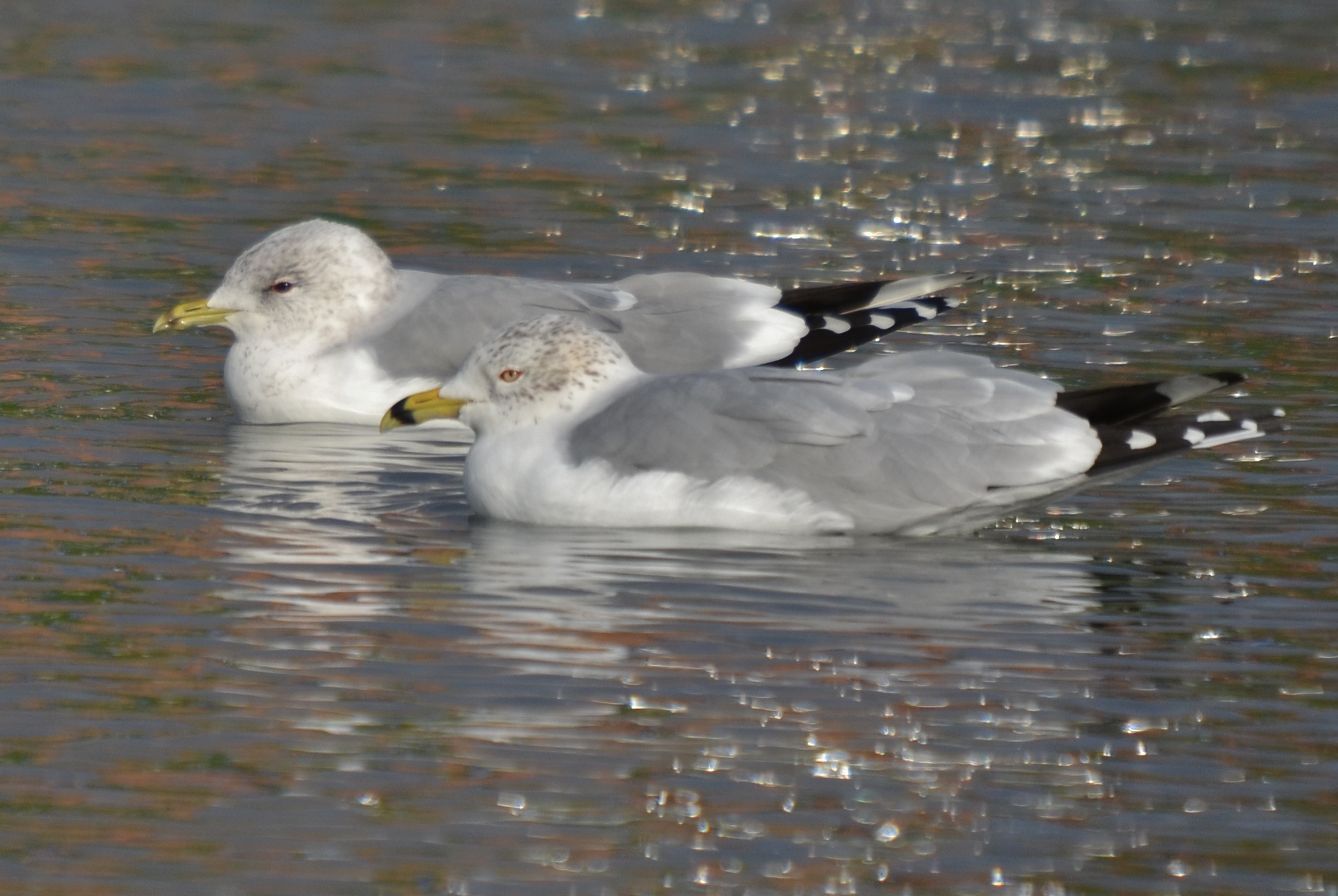
Ring-billed Gull, Gosport, Hampshire (Photo: Mickd)
A Cornish Hoopoe was new at Pendeen on 25th. The Richard's Pipit was again seen at Killard Nature Reserve (Down) on 23rd, while the regular bird was still in fields at Wyke Regis (Dorset) to 24th. Shore Larks were reported from just two locations: a flock of four scuttled around Holkham Gap (Norfolk), and a single bird was still at the oyster beds on Hayling Island (Hants). A juvenile Swallow at Helston sewage works (Cornwall) on 19th–23rd was out of the blue, although another was reported at Cold Norton (Essex) on 25th. Either these birds have been around all winter, or perhaps they have arrived with the same weather conditions that delivered the Glossy Ibises from Iberia last week?

Richard's Pipit, Killard NR, Down (Photo: Craig Nash)

Swallow, Helston, Cornwall (Photo: Steve Bury)
In East Yorkshire, the male Desert Wheatear battled on at Bempton Cliffs throughout; this hardy creature is the only remnant of the influx of late autumn 2011. Waxwings were a bit more widespread across Yorkshire this week, with small flocks in Sheffield and Leeds both attracting attention. Also still popular were birds in the East Anglian 'capitals': flocks of 40 and 45 were still in Norwich (Norfolk) and Ipswich (Suffolk) respectively.
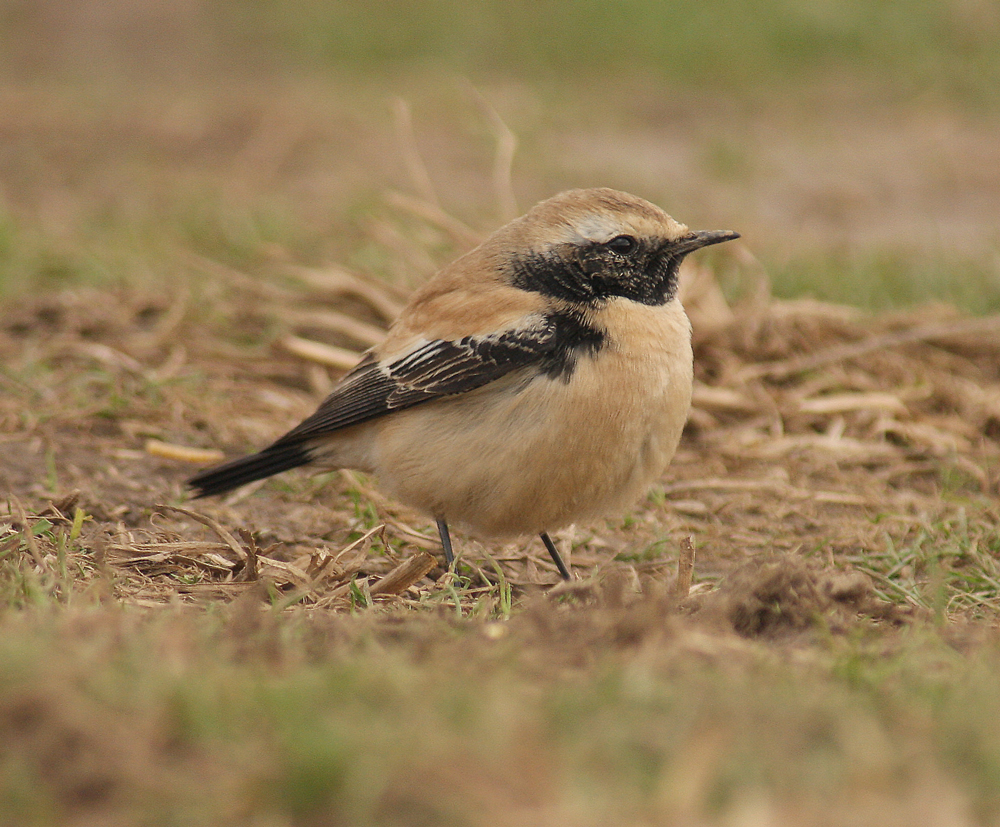
Desert Wheatear, Bempton Cliffs RSPB, East Yorkshire (Photo: Richard Dawkins)

Waxwing, Ipswich, Suffolk (Photo: Chris Mayne)
Also still in residence was the Hume's Leaf Warbler at Wyke Regis (Dorset) throughout. Six Yellow-browed Warblers were confined to southwest England: a new bird was in Plymouth (Devon) on 24th, with another still in the county at Exmouth. Two Somerset records concerned long-stayers still at Chew Valley Lake to 21st and Ham Wall to 25th, while two Cornish birds remained at Swanpool and Carnon Downs to 22nd. There was a peculiar report of a Common Whitethroat from near Cuddesdon (Oxon) on 21st, and the Lesser Whitethroat continued on at Berry Hill Fields (Staffs).
There were several new birds among the 24 Great Grey Shrikes reported this week. As usual, the vast majority of records came from England although three Scottish birds were at Duns (Borders), Loch of Leys (Aberdeenshire) and still in the Forest of Ae (Dumf & Gall). Two Welsh records included a new bird at Alwen Reservoir (Conwy).

Great Grey Shrike, Upper Longdon, Staffordshire (Photo: Patrick Perry)
Two gorgeous Northern Long-tailed Tits were still showing on and off at Luddenden Dean (W Yorks) to 24th, although they are mobile and can be elusive at times.

Northern Long-tailed Tit, Luddenden Dean, West Yorkshire (Photo: Steve Culley)
Norfolk continues to host up to three Coues's Arctic Redpolls: the first-winter was still at Titchwell throughout, with two more still among a big flock of Lesser Redpolls visiting nyjer feeders in a Kelling garden.

Coues' Arctic Redpoll, Kelling, Norfolk (Photo: Andy Thompson)
Photo of the Week: 19th–25th January

Sparrowhawk, undisclosed site, Essex (Photo: Rob Cross)
Sparrowhawks are one of the commonest birds of prey in the UK, and can often be seen without even leaving our gardens. As a result, we have no shortage of images of these great-looking raptors (in fact, they were in our top ten species by photo uploads last year). So, what does it take to get an outstanding portrait shot of one of these birds? If you look through all of our Sparrowhawk images, you'll see that many have distracting foreground or background details or simply aren't well framed. In contrast, an excellent portrait submitted by Rob Cross this week features a stunning young bird on a weathered post against a diffuse background. Soft lighting, great textures and complimentary colours provide the perfect setting for this subject. This, though, is only half the story. It's useful to compare this starting point with a human portrait photographer's basic studio setup before the shoot begins: the real skill is then to capture the character of the subject through pose, expression and timing. Where most perched Sparrowhawk shots show the bird either in repose or mildly alert, Rob's image freezes his subject in full 'tension', eyes wide open, head and body forward, talons outstretched, and wings poised. Whether battling strong winds or preparing to launch after prey, it doesn't matter: the power and ferocity of this majestic raptor have been captured and conveyed perfectly.
Other notable photos

Common Crossbill, undisclosed site, North Yorkshire (Photo: Clare Scott)

Waxwing, Norwich, Norfolk (Photo: Andy Thompson)

Bullfinch, Spital, Cheshire (Photo: Steve Round)
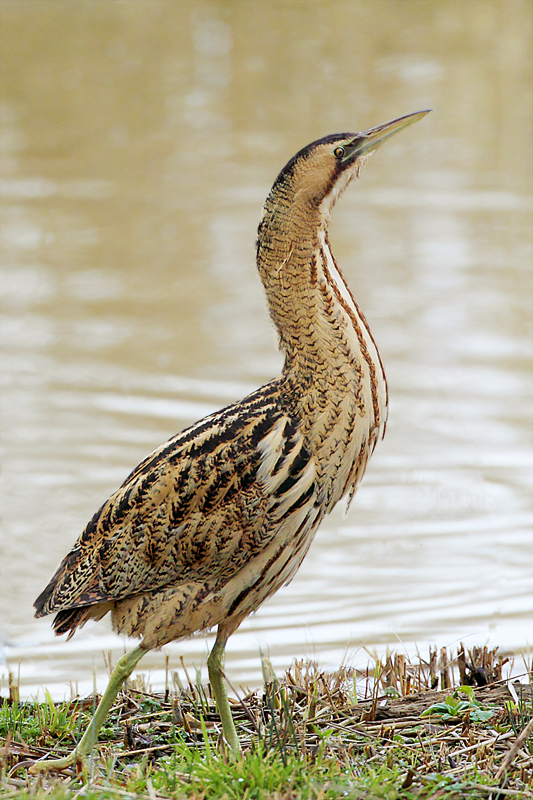
Bittern, Slimbridge WWT, Gloucestershire (Photo: John Fielding)

Blue Chaffinch, Canary Islands (Photo: Brian Harrison)

Little Green Bee-eater, Saudi Arabia (Photo: Duha)

Firecrest, Blean Woods RSPB, Kent (Photo: Steve Ashton)

Long-tailed Tit, Sculthorpe Moor NR, Norfolk (Photo: Graham Brownlow)

Chough, Bardsey Island, Gwynedd (Photo: Ben Porter (aged 15))

Snail Kite, Brazil (Photo: Peter Gasson)
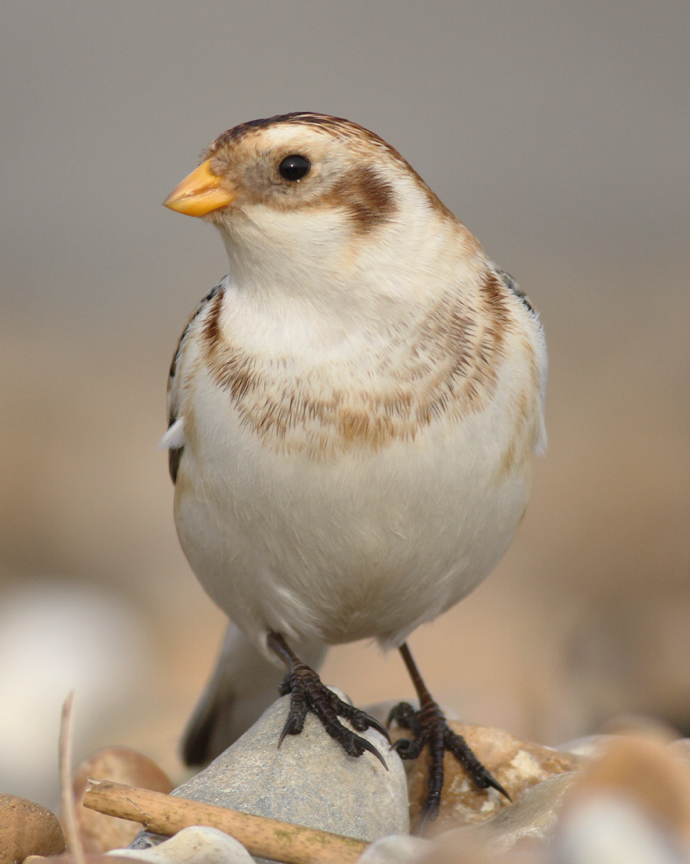
Snow Bunting, Widewater Lagoon, West Sussex (Photo: Jacob J Everitt)
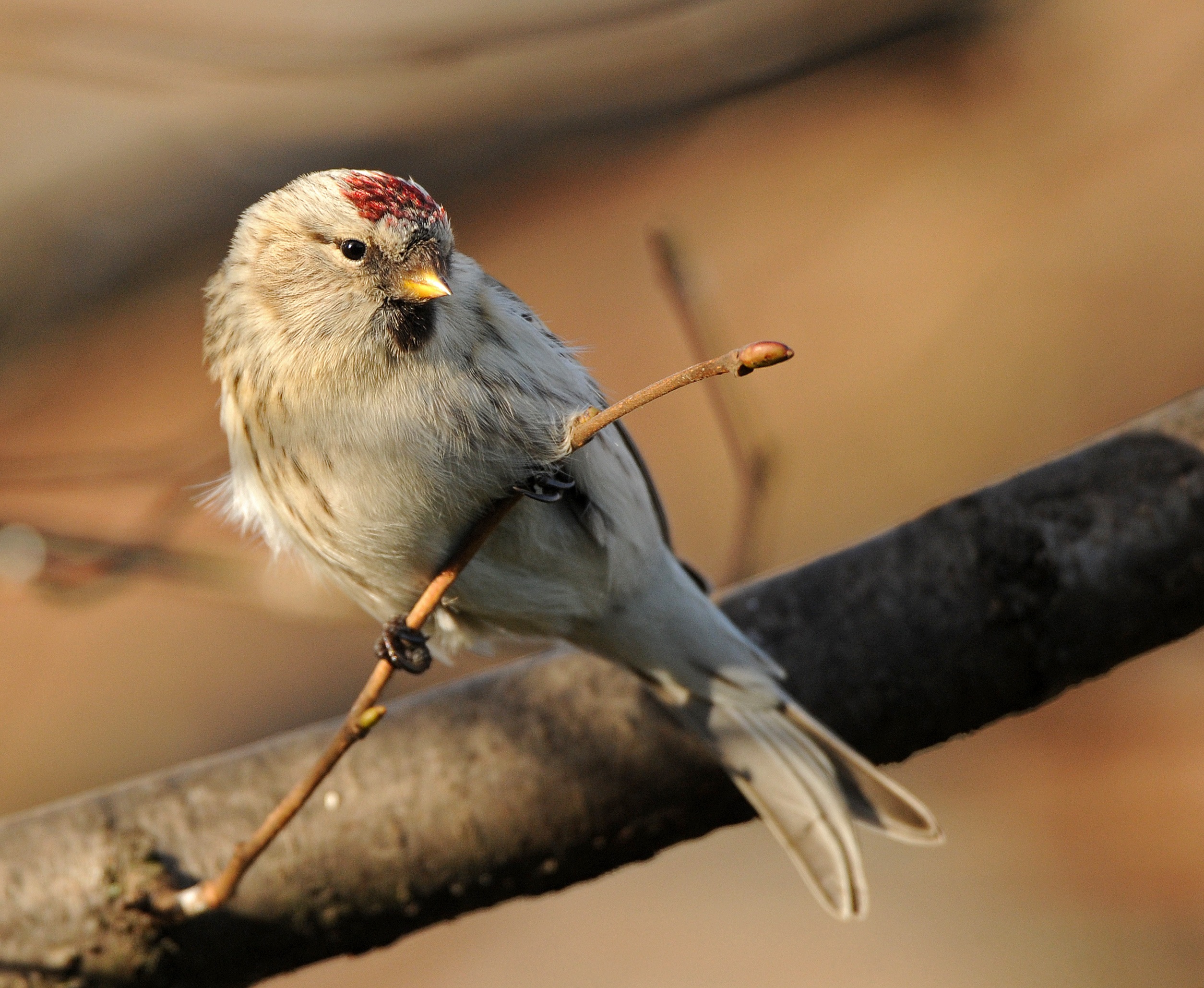
Coues' Arctic Redpoll, Kelling, Norfolk (Photo: Jon Evans)

Black-rumped Flameback, India (Photo: Sunny Joseph)


